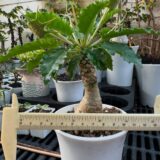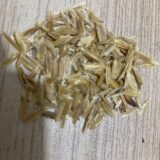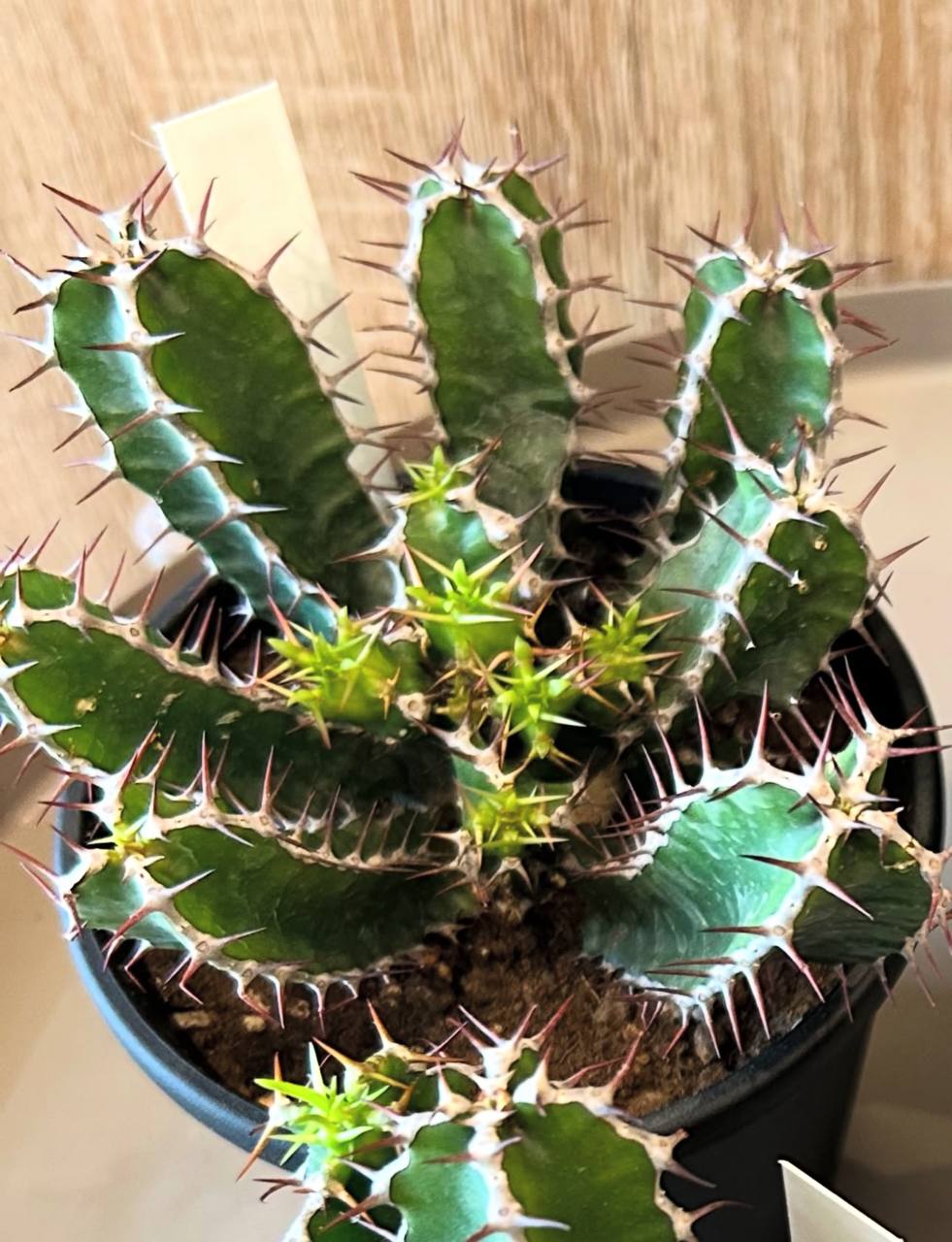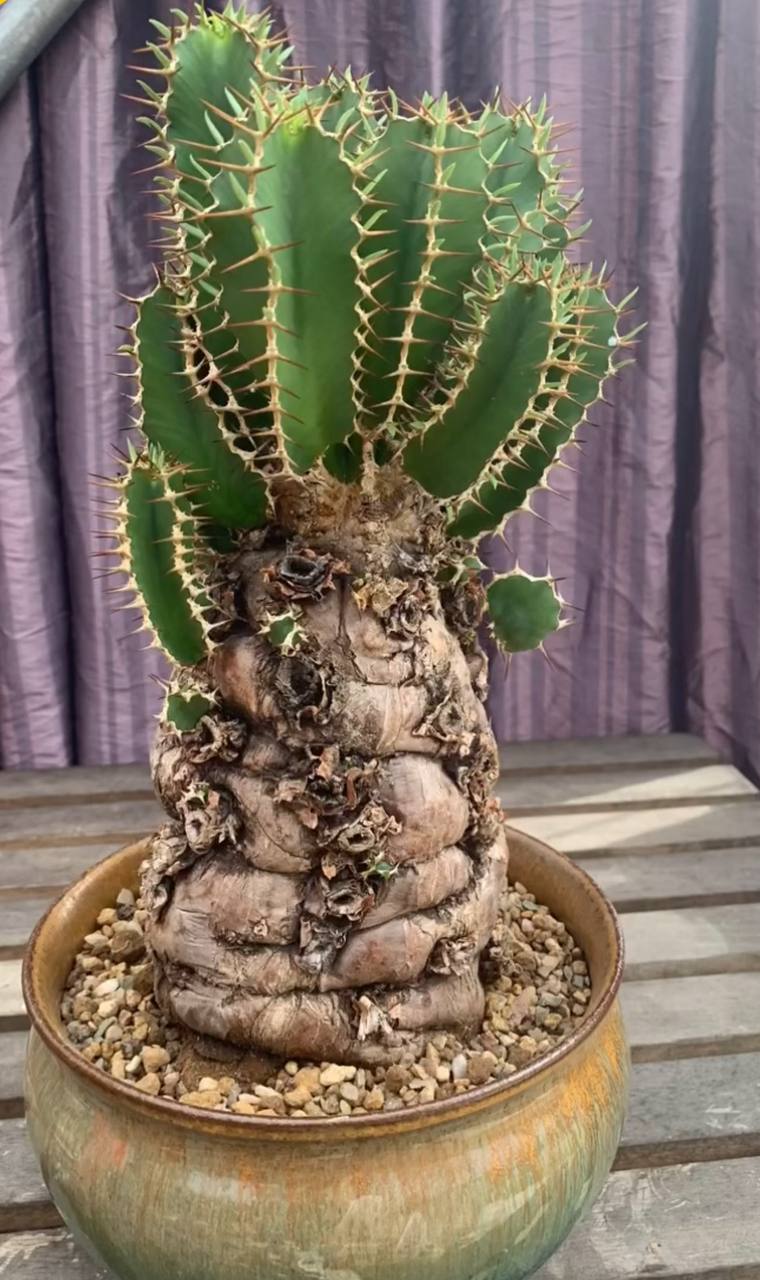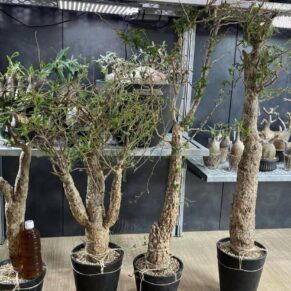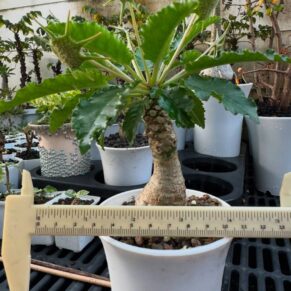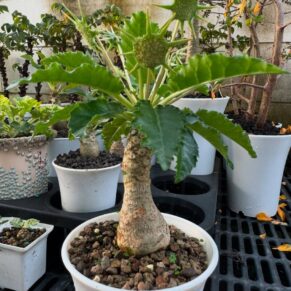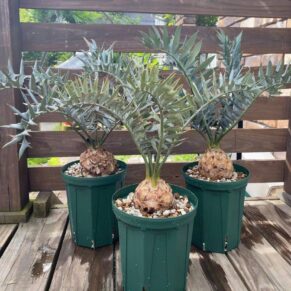Total $90.00
Comprehensive Guide to Euphorbia mlanjeana: Cultivation, Care, and Propagation
🌿 Introduction to Euphorbia mlanjeana
Euphorbia mlanjeana, commonly known as the Mlanje Spurge, is a striking succulent native to the highlands of Malawi and parts of Mozambique. This species is renowned for its unique appearance, characterized by thick, cylindrical stems and sparse, small leaves. Facebook Page.It typically grows in a clumping form, creating dense clusters of stems that add an exotic touch to any plant collection.caudexplants.com
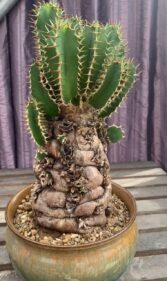
🌍 Natural Habitat and Distribution
Euphorbia mlanjeana thrives in sub-montane and montane areas at altitudes ranging from 1,000 to 1,800 meters above sea level. It is predominantly found on exposed granite slopes in southern Malawi and parts of Mozambique. The plant’s natural environment is characterized by well-draining, rocky soils and a climate that experiences moderate rainfall and cooler temperatures.caudexplants.com
🌱 Morphological Characteristics
-
Stem: The plant features a stout stem that can reach up to 10 cm in diameter and is often short, around 50 cm in height. The stem is crowned with ascending branches.Branches: Branches can grow up to 60 cm long and approximately 3 cm in diameter. They are 3–5(6)-angled, sometimes slightly constricted into 2–3 segments, with winged angles approximately 1 cm wide and 2 mm thick.Spines: Spine shields are separate at first but become joined with age into a horny margin 1–1.5 mm wide. Spines are 4–5 mm long and widely diverging.Leaves: The leaves are small, measuring 3–4 × 1 mm, ovate, and deciduous.Flowers: The plant produces small, green flowers with white rims that appear between April and June. Cymes are solitary, simple, and subsessile. Male flowers are numerous, with bracteoles filiform and stamens approximately 4 mm long. Female flowers have styles joined halfway with spreading bifid apices.Fruits and Seeds: The capsule is acutely lobed, base truncate, exserted on a recurved pedicel to 8 mm long. Seeds are subglobose, brown, smooth, measuring approximately 2 × 2.25 mm. 🌞 Cultivation Requirements.caudexplants.com
Light
Euphorbia mlanjeana requires full sun to light shade for optimal growth. While it can tolerate partial sun, excessive shade may result in stunted growth and poor blooming. Temperature
The plant prefers a warm and humid climate, with a temperature range of 20 to 30 degrees Celsius during the growing season. It can also tolerate cooler temperatures of around 10 degrees Celsius during winter. Soil
Euphorbia mlanjeana thrives in well-draining soil with a neutral to slightly acidic pH level. It can tolerate poor soil conditions but requires good soil drainage to prevent root rot. The soil should also be rich in organic matter and low in salt content.caudexplants.com
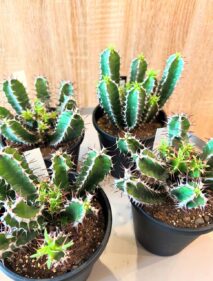
Watering
The plant prefers moderate watering. It can tolerate drought but needs regular watering during the growing season to ensure healthy growth and blooming. Overwatering can cause root rot and other fungal disease.caudexplants.com
Fertilization
Euphorbia mlanjeana requires very little fertilizer. A balanced, low-nitrogen fertilizer can be added to the soil once or twice a year during the growing season to promote healthy growth and blooming. Avoid fertilizing during the winter months when the plant is not actively growi.caudexplants.com
🌿 Propagation Methods
Stem Cuttings
Propagation from stem cuttings is a reliable method for Euphorbia mlanjeana. Cuttings should be taken with a clean, sharp knife. The best time to take cuttings is in the spring when growth starts, but summer is also suitable. After cutting, allow the cut surface to dry for several days to prevent rot. Dusting the cut surface with a hormone-rooting powder can help roots form. Plant the cuttings in a well-draining soil mix and maintain high humidity until roots develo.caudexplants.com
Leaf Cuttings
Some Euphorbia species can be propagated from leaf cuttings. Gently pull leaves from the plant and allow them to dry for a few days. Once dry, plant them in a well-draining soil mix and maintain high humidity. However, this method is less commonly successful for Euphorbia mlanjeana.shop here
Offsets
Euphorbia mlanjeana can also propagate through offsets. These are small shoots that emerge from the base of the plant. Once the offsets are large enough to handle, they can be separated from the mother plant and planted in their own pots. Ensure the offsets are kept in a humid environment until they establish roots.caudexplants.com

🐛 Pest and Disease Management
While Euphorbia mlanjeana is relatively resistant to pests and diseases, it’s essential to monitor for common issues:
-
Pests: Watch for aphids, mealybugs, and spider mites.
-
Diseases: Prevent root rot by ensuring proper drainage and avoiding overwatering.
Regularly inspect the plant for signs of pests or disease, and take appropriate action if necessary.
🛒 Where to Purchase Euphorbia mlanjeana
Euphorbia mlanjeana is available for purchase from various online nurseries and specialty plant retailers. Ensure to buy from reputable sources to guarantee the authenticity and health of the plant.caudexplants.com
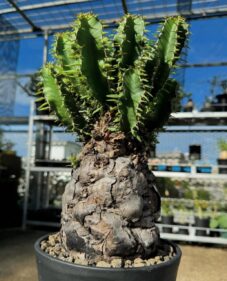
Adenium SwazicumAdenium Swazicum
🧪 Conclusion
Euphorbia mlanjeana is a unique and captivating succulent that adds an exotic touch to any plant collection. With its distinctive appearance and relatively low maintenance requirements, it is an excellent choice for both novice and experienced gardeners. By understanding its natural habitat and providing appropriate care, Euphorbia mlanjeana can thrive and become a standout feature in your garden or indoor plant collection.caudexplants.com
Note: Always handle Euphorbia species with care, as their sap can cause skin irritation. Wear gloves when handling and avoid contact with eyes

